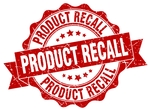Posted In: Insurance Recovery
 How to Protect Your Food
How to Protect Your Food
on May 22, 2017
A commercial general liability (CGL) policy is important and protects companies from a number of unexpected events; however, nowadays the CGL policy often comes up short when it comes to industry specific issues. The costs of food recalls and damages arising from the contamination of food products often require specific insurance. Fortunately, insurance companies have responded to the demands of the market and now offer several industry-specific policies, including consumable product policies, component part policies, consumer goods policies and packager protection policies, among others.
Consumable product insurance applies to any product that is ingestible by and/or for topical application on humans. This generally covers food, beverages, pharmaceuticals, cosmetics and tobacco. While consumable product coverage may be triggered by accidental contamination or malicious tampering with the product, simply knowing that consumption of the product would cause bodily injury or property damage is generally sufficient. However, this insurance does have its limits, as it does not cover products meant for ingestion by and/or topical application on animals. If you work with products intended for animals, you should look into another option.
Component part insurance covers exactly what it sounds like, the components used to manufacture non-consumable merchandise, such as cars, machinery and airplanes. This type of insurance generally applies when: (1) the use of the product has caused bodily injury or property damage, (2) the product poses an actual and imminent danger of causing bodily injury or property damage, or (3) the product has impaired property. This type of claim is usually excluded from the CGL policies.
Consumer goods insurance applies to finished products such as appliances, electronics, furniture, clothing and any other household items, excluding components. Consumer goods insurance generally applies when there is knowledge that the product is defective and that its use would cause, or has caused, bodily injury or property damage.
Packagers’ protection insurance is customized for the packaging industry, including manufacturers of packaging for food and beverage production. This type of insurance generally offers protection when there is product contamination or manufacturing errors and omissions. It is not uncommon for food packagers to be exposed to third-party costs associated with recalls even if they are not responsible for the contamination.
The coverages described above apply to specific types of products or industries, but there is also specific insurance that addresses different types of harm. For example, contamination policies are usually limited to accidental food contamination but don’t require a recall. This coverage typically will protect you in the instance you realize that the product has been compromised prior to the need for a recall. Recall policies, on the other hand, generally do not require actual contamination to the product but often require a reasonable expectation of injury or damage. This could come into play with labeling issues. If a product is not properly labeled as containing nuts, for instance, it may need to be recalled because there is a risk of injury to those with allergies. There, however, is no actual contamination.
Regardless of which type of insurance policy you procure, you must carefully read your policy to ascertain the breadth and limitations of the coverage provided. By doing so, you can reduce the risk of unwittingly exposing yourself to uncovered losses. By way of example, you may believe that your “food recall” policy provides coverage for all food recalls, when that policy is expressly limited to government-mandated food recalls. Since there has never been a mandatory government recall, this policy has very little likelihood of protecting your company, contrary to your expectations.
This article identifies several of the policies currently available to the food industry, but it is important to check with your broker because insurance companies are constantly developing new insurance products to respond to the demands created by the companies they service.
This blog is intended to provide information generally and to identify general legal requirements. It is not intended as a form of, or as a substitute for legal advice. Such advice should always come from in-house or retained counsel. Moreover, if this Blog in any way seems to contradict advice of counsel, counsel's opinion should control over anything written herein. No attorney client relationship is created or implied by this Blog. © 2024 Brouse McDowell. All rights reserved.






